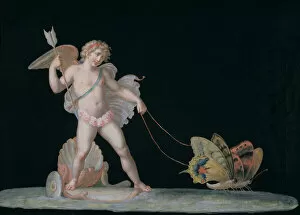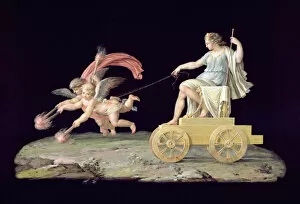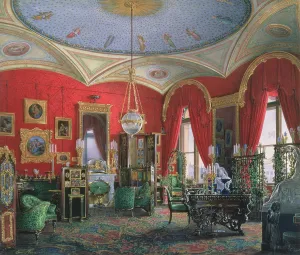Pompeian Style Collection
The Pompeian style, known for its exquisite artistry and rich cultural references, has captivated art enthusiasts throughout history
All Professionally Made to Order for Quick Shipping
The Pompeian style, known for its exquisite artistry and rich cultural references, has captivated art enthusiasts throughout history. From the Allegory of comedy, justice, and truth fresco to the Initiation rites of the cult of Dionysus at Villa Dei Mysteri, these masterpieces transport us to ancient times. Intriguingly, Cupid takes center stage in various Pompeian artworks. In one instance, he is led by graceful butterflies in an oil on panel painting that exudes a sense of delicate beauty. Contrastingly, another piece showcases Cupid being guided by tortoises – a symbol of patience and endurance. Eternity comes alive through yet another mesmerizing oil on panel artwork. This evocative portrayal invites contemplation about life's infinite possibilities and our place within it. Moving beyond paintings alone, Pompeian influence extends to architectural designs as well. The Design Ceiling Pompeian Style from the 18th century exhibits intricate patterns reminiscent of ancient Roman aesthetics. Similarly, the Coffee Room Elevation exemplifies how this style transcended time into the 19th century with its elegant fusion of classical elements. Pompeian inspiration even found its way into room design as seen in the Etruscan Pompeian Style Elevation. This amalgamation creates a unique ambiance that pays homage to both ancient civilizations. Not limited to walls and ceilings alone, Chimney Piece also embraced this captivating style during the late 18th century. The ink wash rendering showcases meticulous details that add depth and grandeur to any space fortunate enough to house such a masterpiece. Beyond visual arts lies Angelica Catalani's enchanting engraved portrait by Francesco Bartolozzi from 1802. This depiction immortalizes her talent while simultaneously showcasing how engraving techniques were employed during this era. Lastly but certainly not least is an awe-inspiring watercolor on paper capturing the Interior of Winter Palace adorned with frescoes depicting the facade of a Roman villa.











